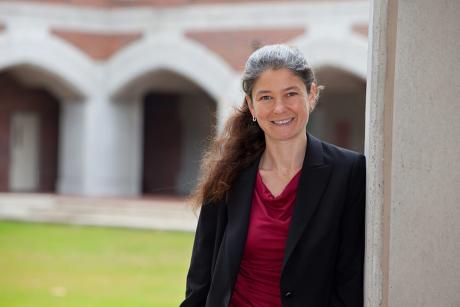Understanding a high-risk Alzheimer's population


Oct. 16, 2018
It’s the $3.8 million question: Why do people with Latino backgrounds have a 50 percent greater risk of developing Alzheimer’s disease than non-Latino whites?
FSU College of Medicine researcher Angelina Sutin will seek answers as principal investigator on a $3.8 million grant from the National Institute on Aging of the National Institutes of Health. For the next five years, she’ll be studying midlife cognitive aging in Latinos, looking for predictors and mechanisms of decline.
To address this question, she’ll partner with researchers at the University of California at Davis, who have already collected years’ worth of data on Latino families that they can analyze for clues.
“The group at UC Davis has a great wealth of information on a sample of families that they have been following for 10 years,” said Sutin, an associate professor in the FSU College of Medicine’s Department of Behavioral Sciences and Social Medicine. “It is unusual to have such rich data, especially in a population that is underrepresented in dementia research. It’s a unique opportunity to try to answer questions that may help improve interventions to maintain cognitive function.”
Her team will study about 1,000 adults of Mexican origin who’ve been participating in the California Families Project for 10 years. They’ll try to identify psychological, social, environmental and socioeconomic risk factors for poor cognitive outcomes. The ultimate goal is to find risk and resilience factors and appropriate points of intervention to help improve those outcomes.
Sutin noted that midlife is a particularly important, yet understudied, period for cognitive aging.
“I’m really excited about this project,” she said. “It’s a high-risk population, so being able to identify these factors that can help improve outcomes is the No. 1 priority.
“We’re going to use the extensive and rich data that has already been collected and pair it with a comprehensive cognitive assessment in midlife and other new measures, including accelerometers to measure physical activity. We’re going to look at how psychological, social and behavioral patterns can hurt cognition and identify patterns that help maintain cognitive function.”
Sutin said this project could have both health and economic benefits.
“The prevalence of Alzheimer’s disease in the Latino population is expected to increase nine-fold over the next 50 years,” she said. “In addition to the patient, the burden of Alzheimer’s takes a significant toll on families, their communities and the health care system.”

